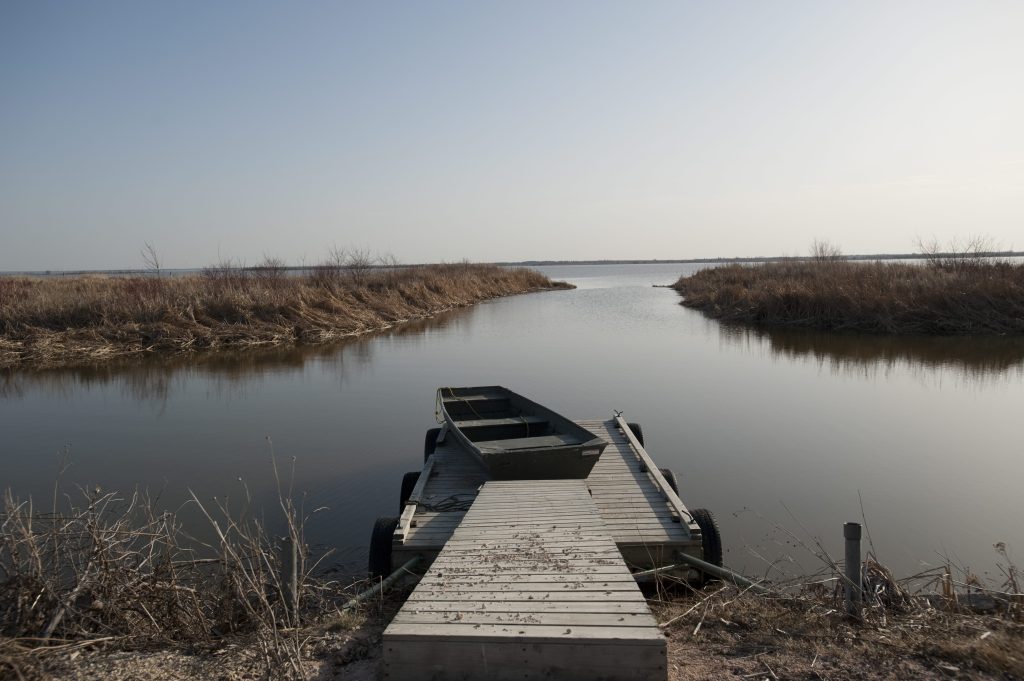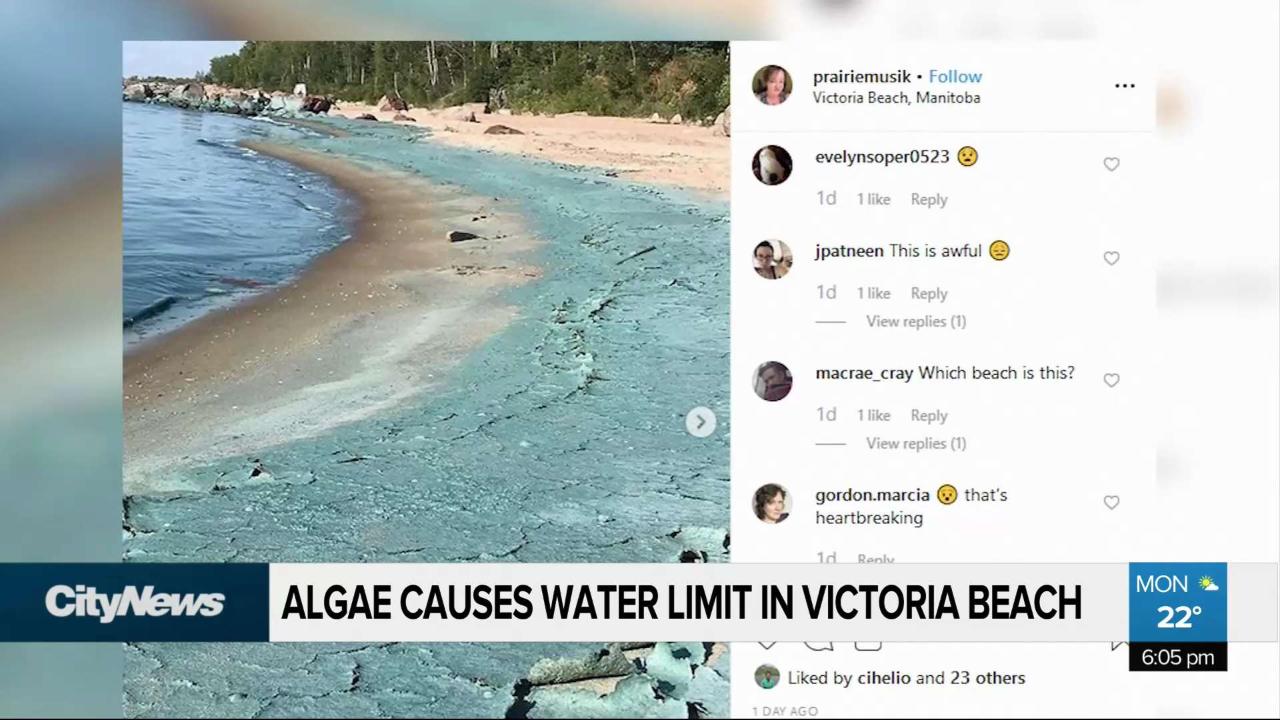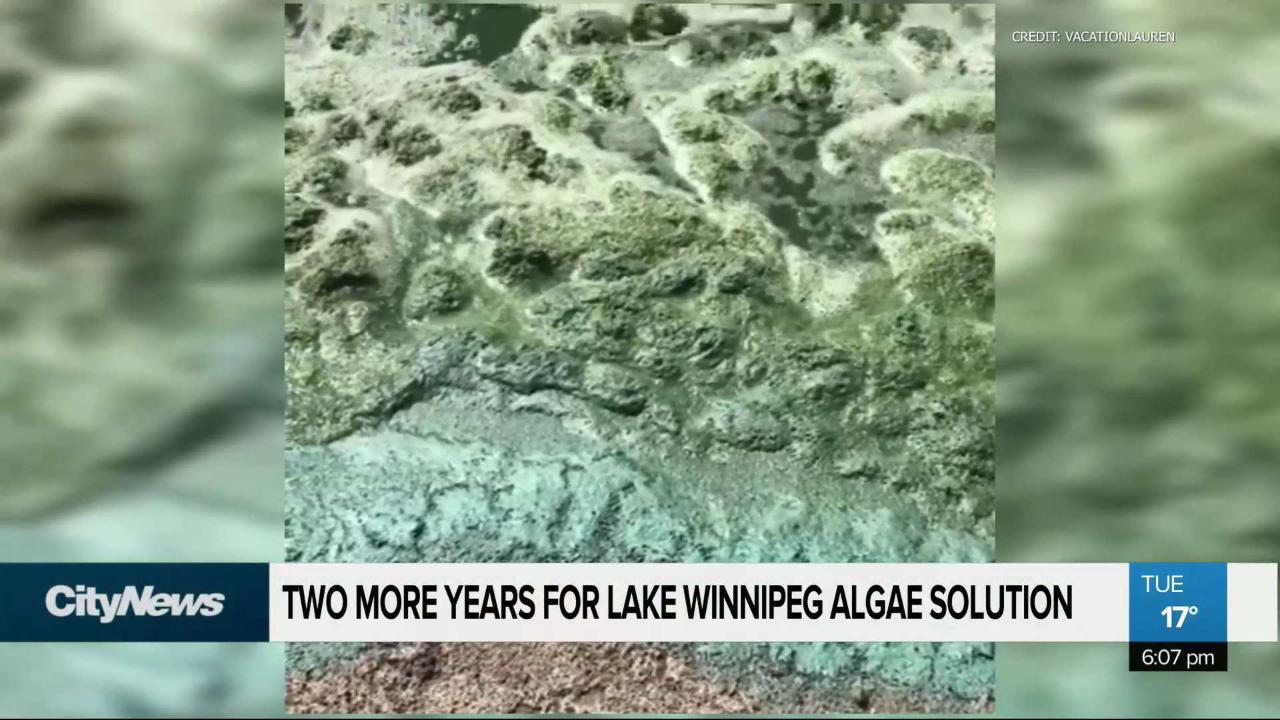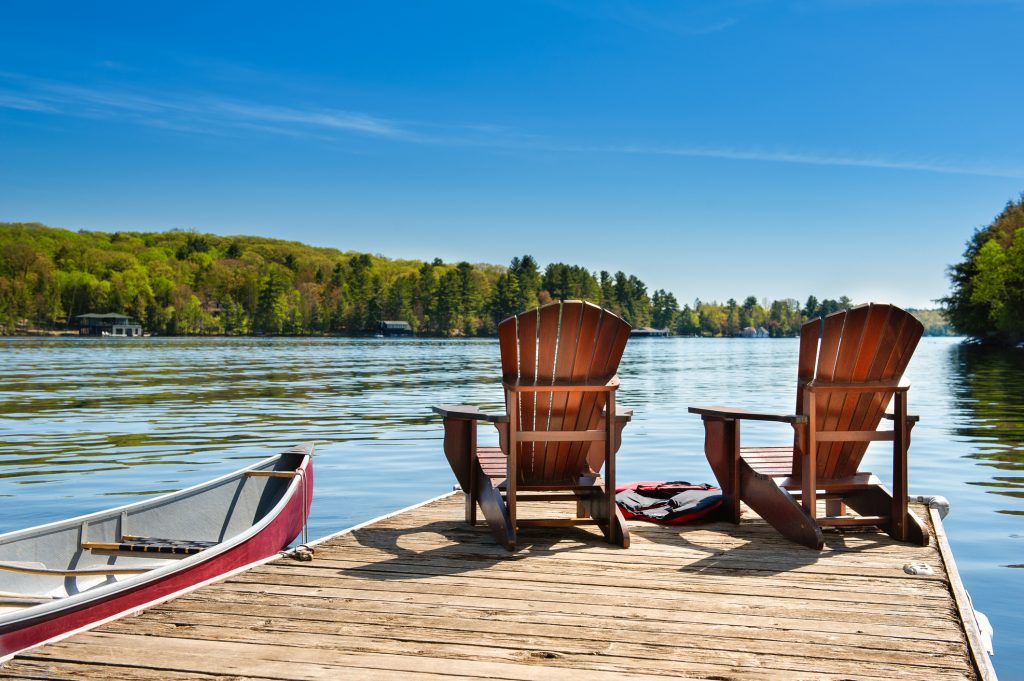Manitoba’s Lake Winnipeg is in danger of becoming a dead lake due to increased algae blooms

Posted October 20, 2023 2:37 pm.
Last Updated October 21, 2023 10:30 am.
Manitoba’s Lake Winnipeg is one of the largest lakes in the world, known for its fishing, beaches, and biodiversity, but the vast body of water is in danger of becoming a dead lake, due to increased algae blooms.
“We’re not taking care of the landscape. We are not respecting the water and the things that we put into them,” said Armand Belanger, Manager of East Interlake Watershed District.
Lake Winnipeg is the 10th largest freshwater lake in the world. Its watershed spans one million kilometres, draining 90 per cent of the agricultural land in Canada. But over the last few years, this blue-green algae has appeared in the lake, threatening its species and water supply.
“The algae blooms are a reason for the threshold phosphorus or excess phosphorus in the water, that is triggering the growth of algae and they can deplete the oxygen when they are decomposing,” explained Dr. Inoka Amarakoon, an assistant professor at the University of Manitoba.
Dr. Amarakoon says better nutrient management is the way to control and prevent the growth of algae blooms.
“What we can do is do more practices to keep it (phosphorus) in the soil and not getting into the waters, or off-site transport,” said Dr. Amarakoon.
There are several organizations across Manitoba that are dedicated to preserving and saving Lake Winnipeg — the East Interlake Watershed District in Gimli, Manitoba is one of them.
RELATED:
Belanger says it’s important to take care of the soil, because the best place for water to end up, is in the soil. He says the district is working with farmers and developers to turn the soil from concrete into a sponge.
“When we grow the soils, the soils turn into a living sponge and are able to absorb the water, and the biodiversity below ground in those soils increases. When we have that, we have biodiversity above ground, and everywhere which makes our landscape a lot healthier,” said Belanger.
Belanger says his group is undertaking several projects to improve and maintain soil quality, water quality, and other natural assets. He says the health of the lake depends on how we manage and take care of the land that flows into the lake – and right now, there are two sources where contaminates are flowing into the lake.
“The point source that we see from lagoons and sewage systems and then the non-point source. The non-point source, everybody can help tackle this issue by improving the landscape around them,” said Belanger.
Amarakoon says it’s important for the public to understand that the algae is still growing, which is extremely concerning.
“More awareness, more commitment, and a more collective effort (is needed) to reduce the loading.”












